Vistosi has always defined the contemporary, impressing its customers, innovating and fulfilling their desire for uniqueness.
For almost 500 years, the Vistosi furnace has been transforming silica sand using the blown glass technique into timelessly stylish lamps.
In 2023, Vistosi launched a new project for the first time, honouring its partners with a limited series of 500 unique and numbered glasses.
The company has made its know-how available to give life to unprecedented objects. A new language that Vistosi has chosen, interpreting and updating the magic between liquid and solid matter.
Each Vistosi Murano glass is made with extreme care and attention: from its nuances, to its reflections, to the study of its shape.
Each stage of the workmanship is carefully assessed, the detail demands respect.
A thoughtful mix of precious materials, colours and workmanship that echo those used in the catalogue lamps. The glass has a sinuous, tapered shape facing upwards, its size designed to make it an important object. The frieze on each piece bearing part of the logo is our signature of authenticity.
The project was a great success and has been repeated in 2024.
A brochure accompanies the pair of glasses to explain the design and the entire concept of the collection.
A six-year cycle with six different glass colours: amber, smoked, antique green, burnt earth, amethyst and transparent crystal. The pair is always composed of one smooth blown glass element and one worked glass element.
The proposed workmanships resume the different declinations of balloton to rhomboid, of vertical rigadin to twisted.
The warm and enveloping colours sensually enhance the curves of the glass, becoming iconic and unequivocally celebrating the infinity of a craftsmanship gesture.
First Edition 2023
Transparent amber crystal with balloton and smooth finish
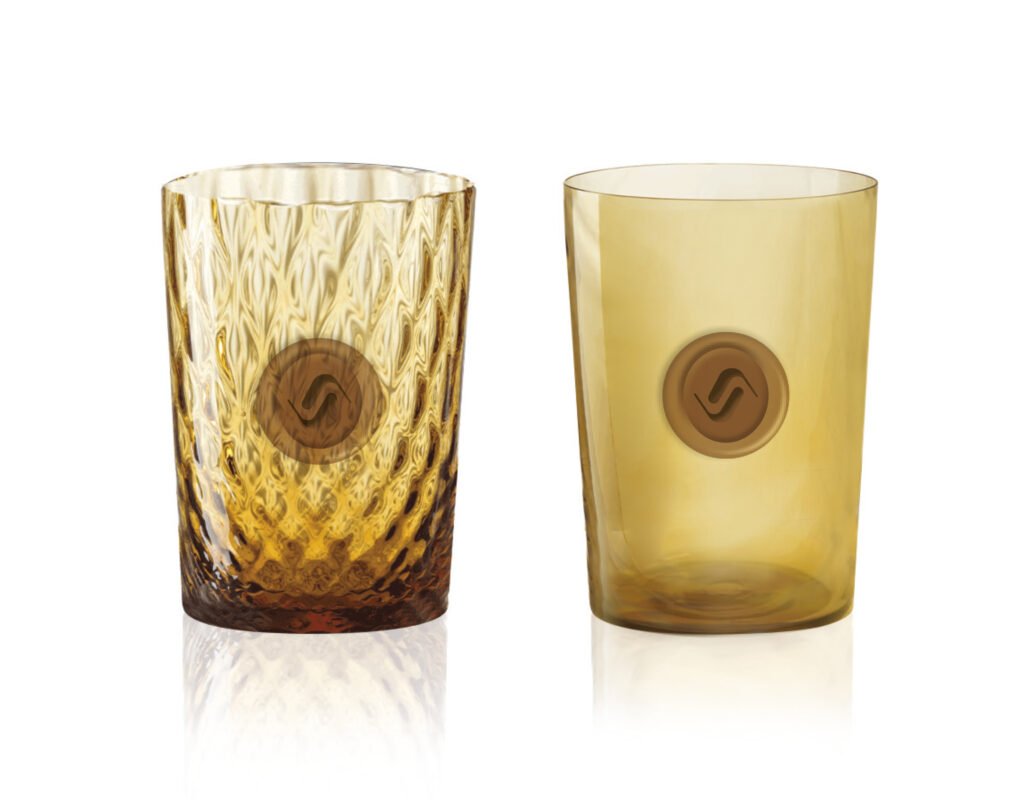
Second Edition 2024
Transparent smoked crystal with twisted and smooth rigadin processing
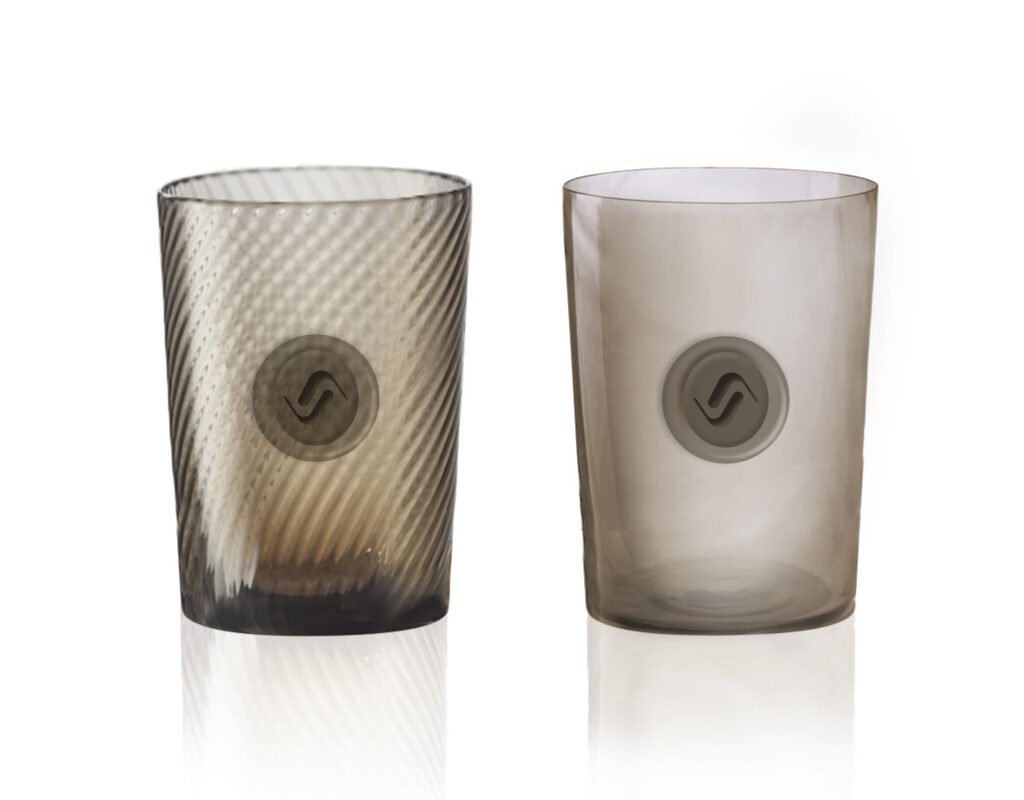
Next editions
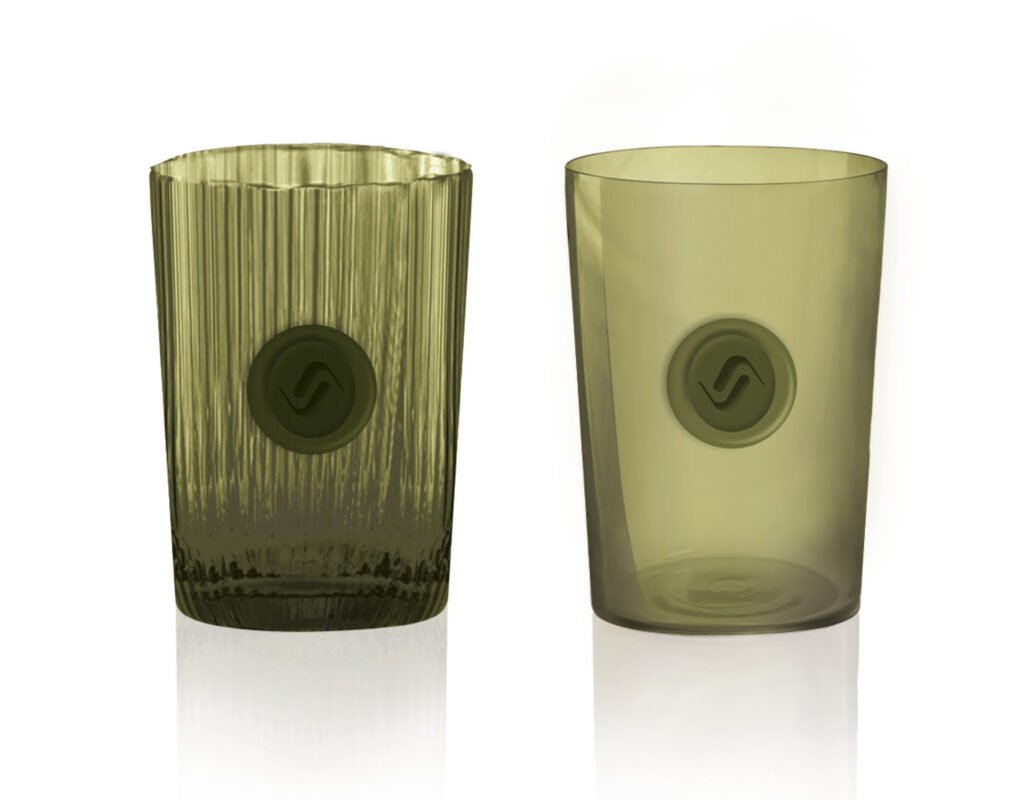
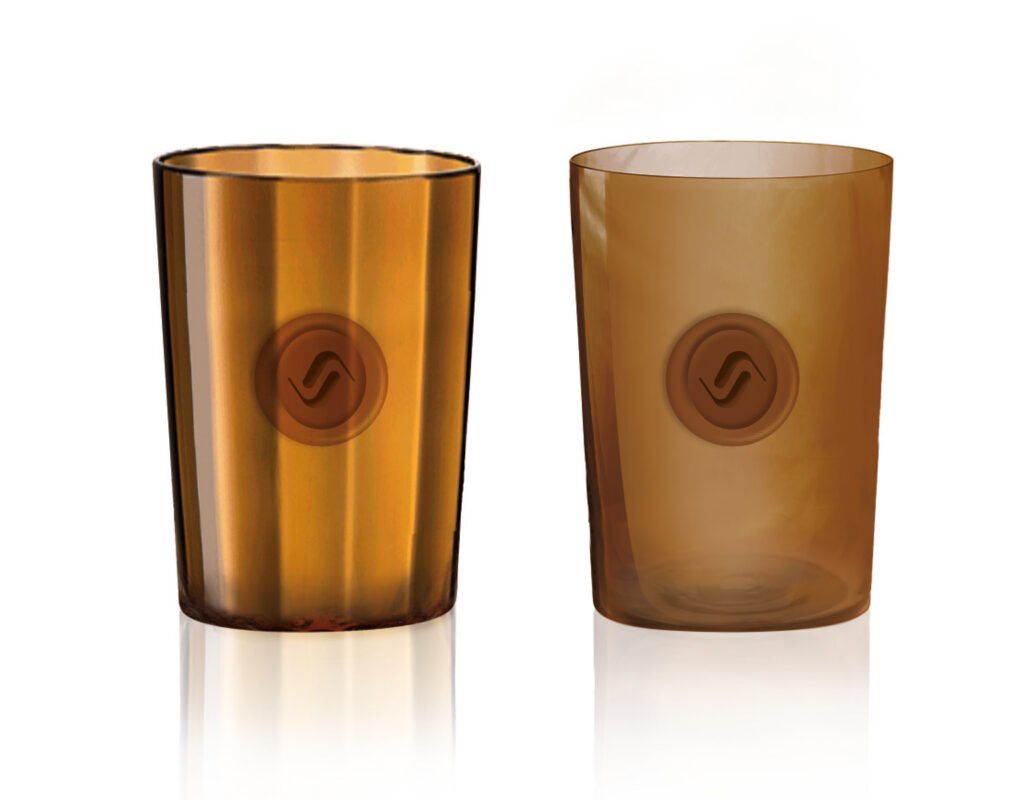
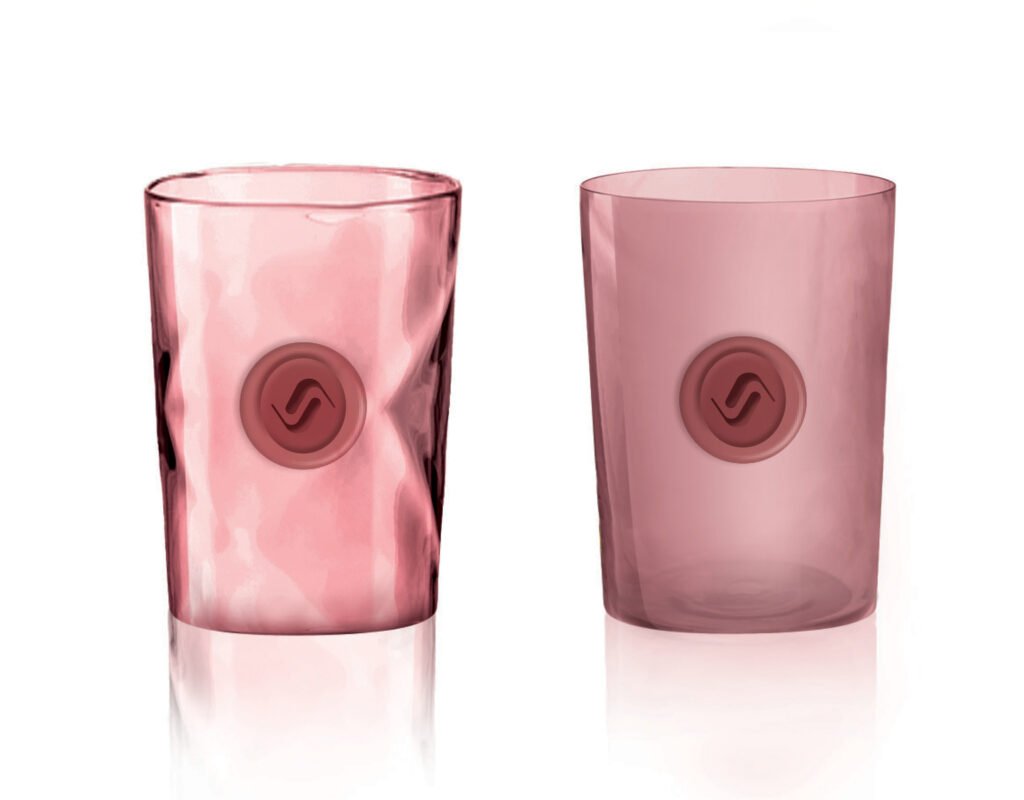
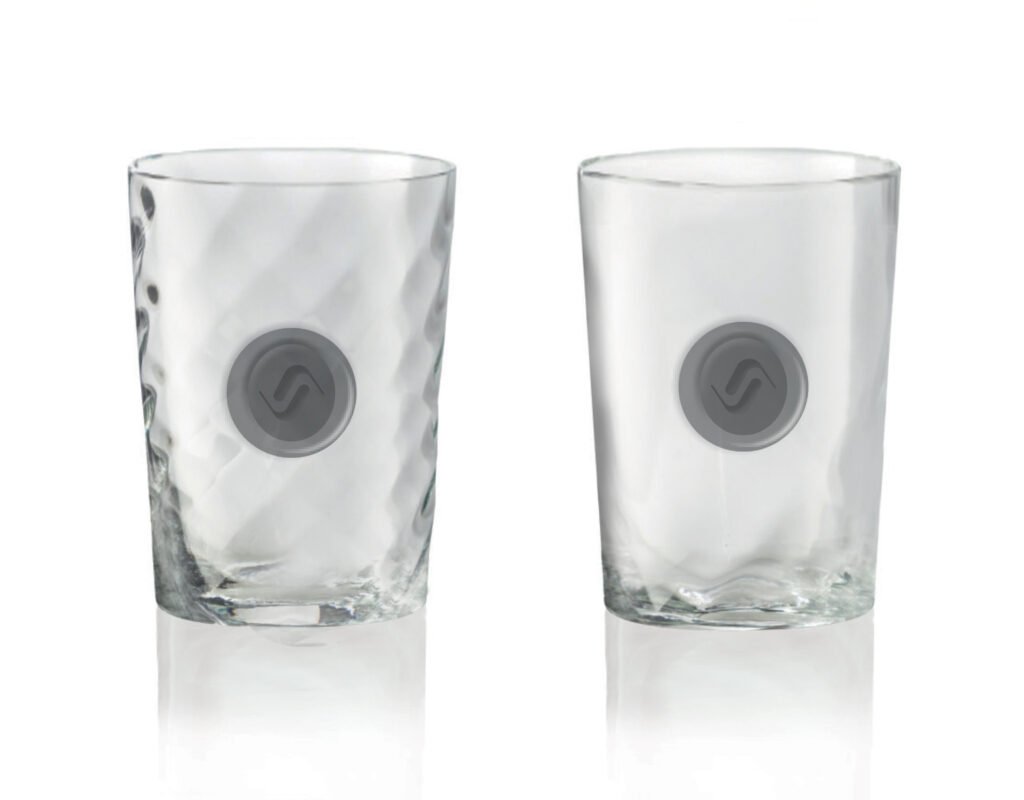
A few brief explanations on the workings on our glasses and lamps:
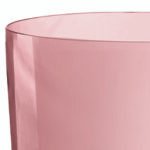
BLOWING The technique of blowing was discovered in the second half of the 1st century B.C. probably in the Syro-Palestinian region and was rapidly exploited by the flourishing Roman industry. This discovery constitutes the most revolutionary moment in the evolution of glassmaking technique; in the long run, it led to the abandonment of most of the friable core and casting processes, the only ones existing until then, and seriously competed with the production of many objects for daily domestic use that had previously been made of ceramics. Blowing can be done by freehand or by blowing the glass into a mould.

BALLOTON E ROMBOIDE Technique used to obtain a particular optical effect. It is based on the use of a metal mould containing small pyramid points with a square base inside which, when blown, give a cross-relief effect. Covering a ballot-moulded péa with a blanket produces the bullicant or bubble effect, consisting of a myriad of tiny air bubbles trapped between the two layers of glass. Applying a gold leaf to the péa after blowing it into the balloton mould and then removing the gold in front of the recesses with a brush produces another interesting gold lattice or beehive effect.

VERTICAL AND TWISTED RIGADIN A decoration obtained by blowing the bead into a mould, usually made of bronze, which bears triangular-section grooves. The pea becomes ribbed; if the glass is also twisted during moulding, the twisted rigadin is obtained. One can also, after heating at the mouth of the furnace, put the already moulded ball back into the same mould by twisting it in the opposite direction. This produces diagonally crossed striations.
For those who would like them for a special gift, a spare part or simply for themselves, they can be purchased by making a request to our sales staff.
© 2024 Vetreria Vistosi srl
Via Galileo Galilei, 9-9/A-11
31021 Mogliano Veneto – TV (Italy)
T. +39 041 5903480 / +39 041 5900170
Email: vistosi@vistosi.it
P.IVA IT02497840278
Company register 01808840266
REA registration number TV- 170728
Share Capital 100,000.00 €
© 2024 Vetreria Vistosi srl
Via Galileo Galilei,9-9/A-11
31021 Mogliano Veneto – TV (Italy)
T. +39 041 5903480 / +39 041 5900170
vistosi@vistosi.it
P.IVA IT02497840278